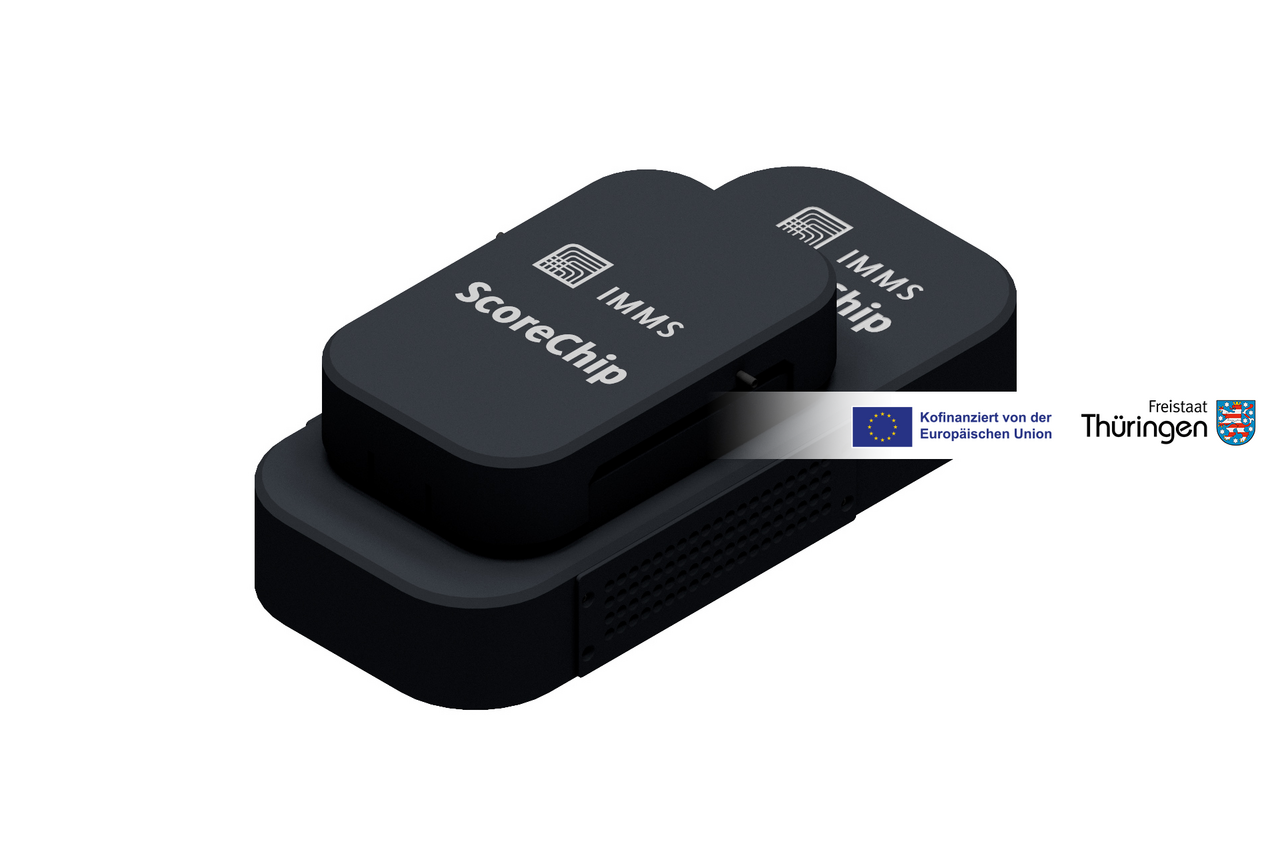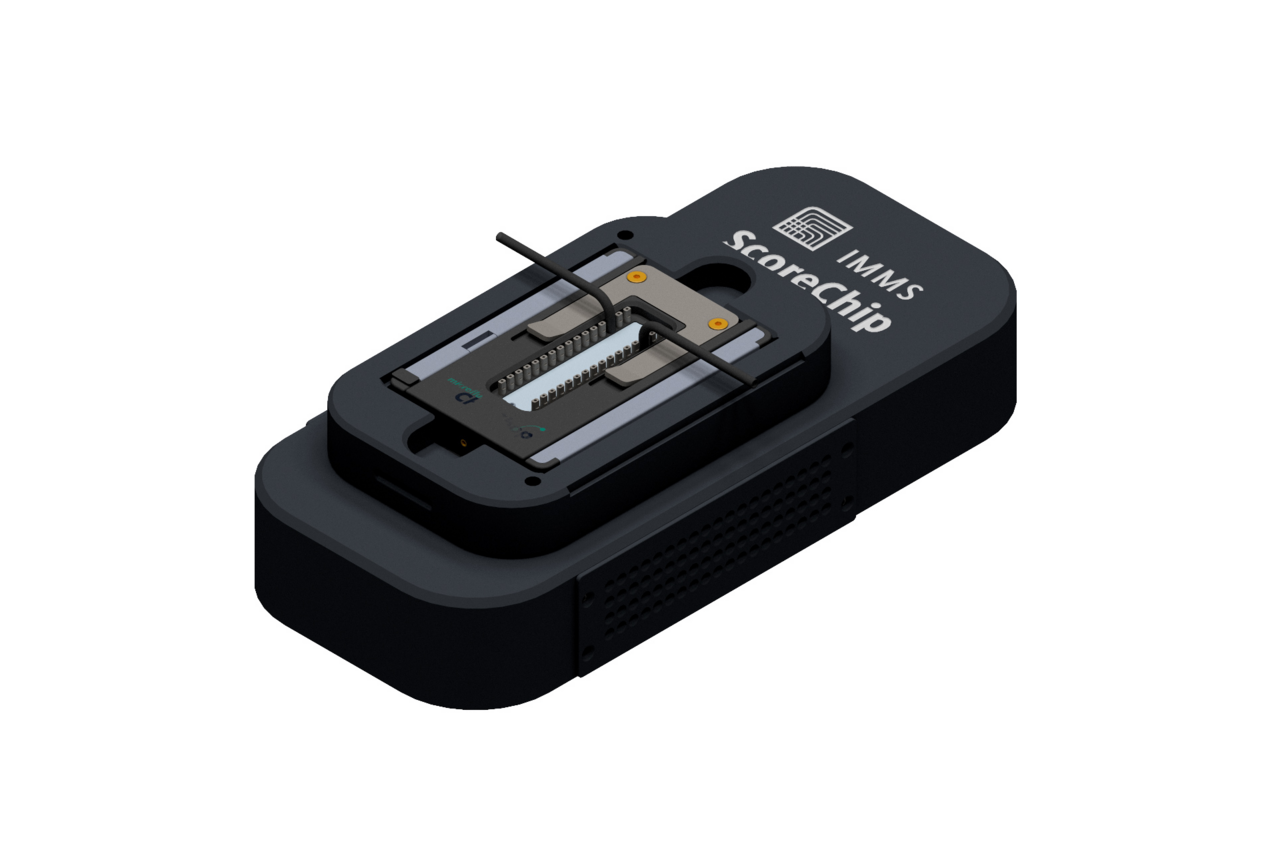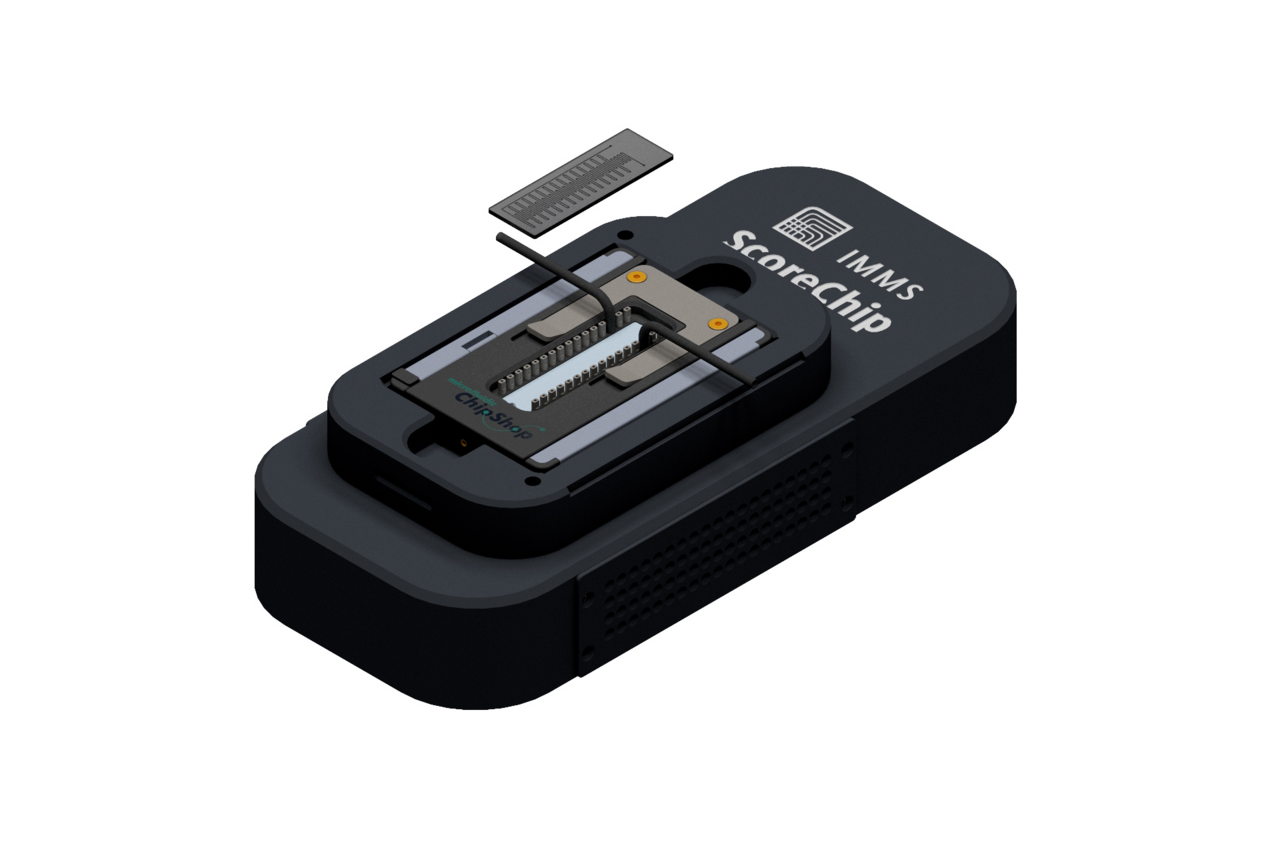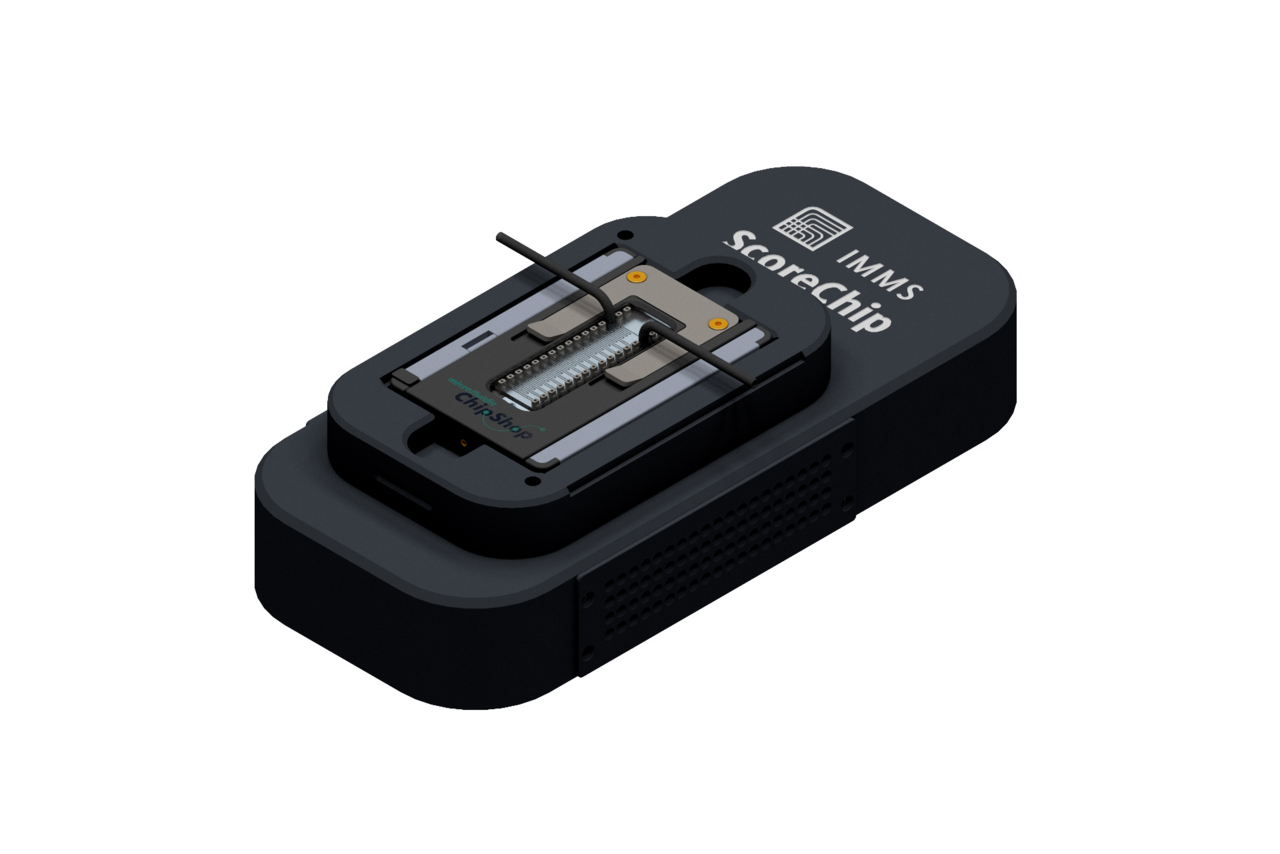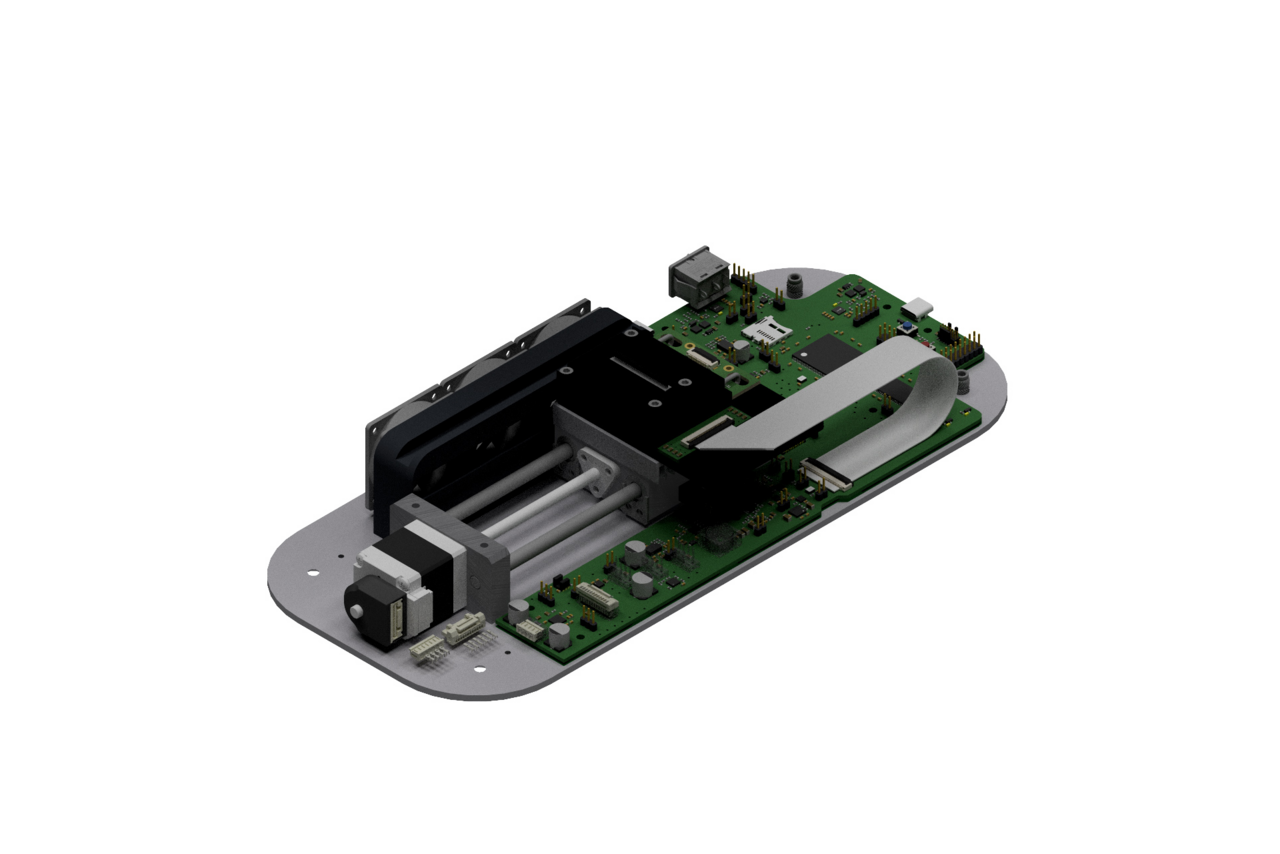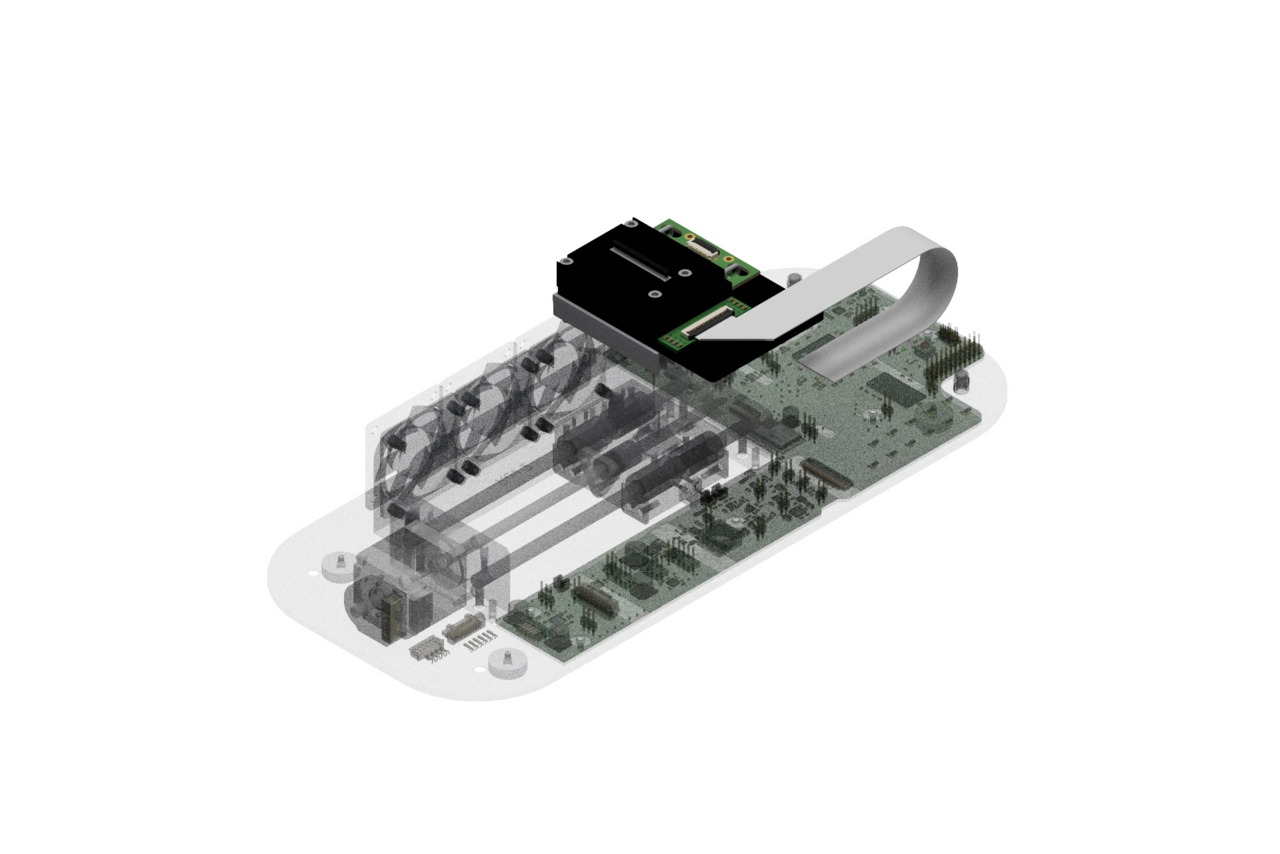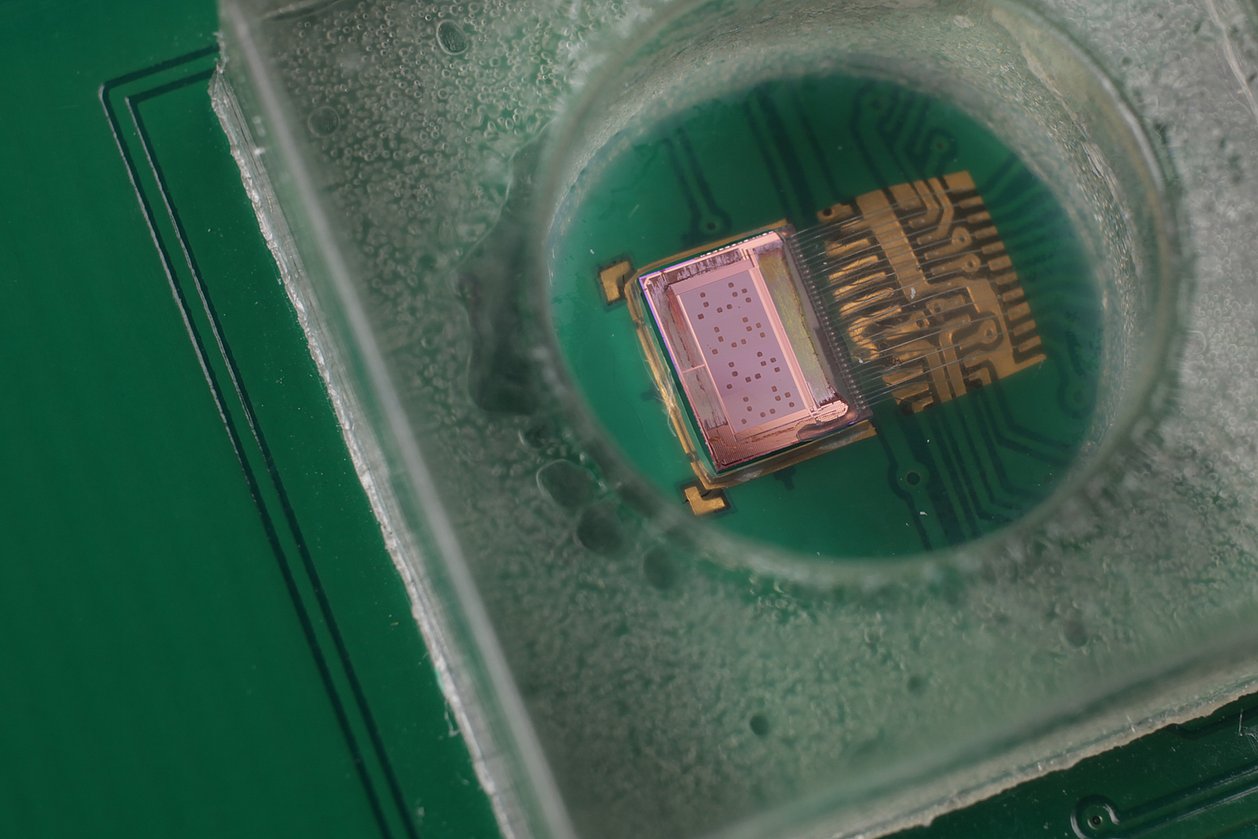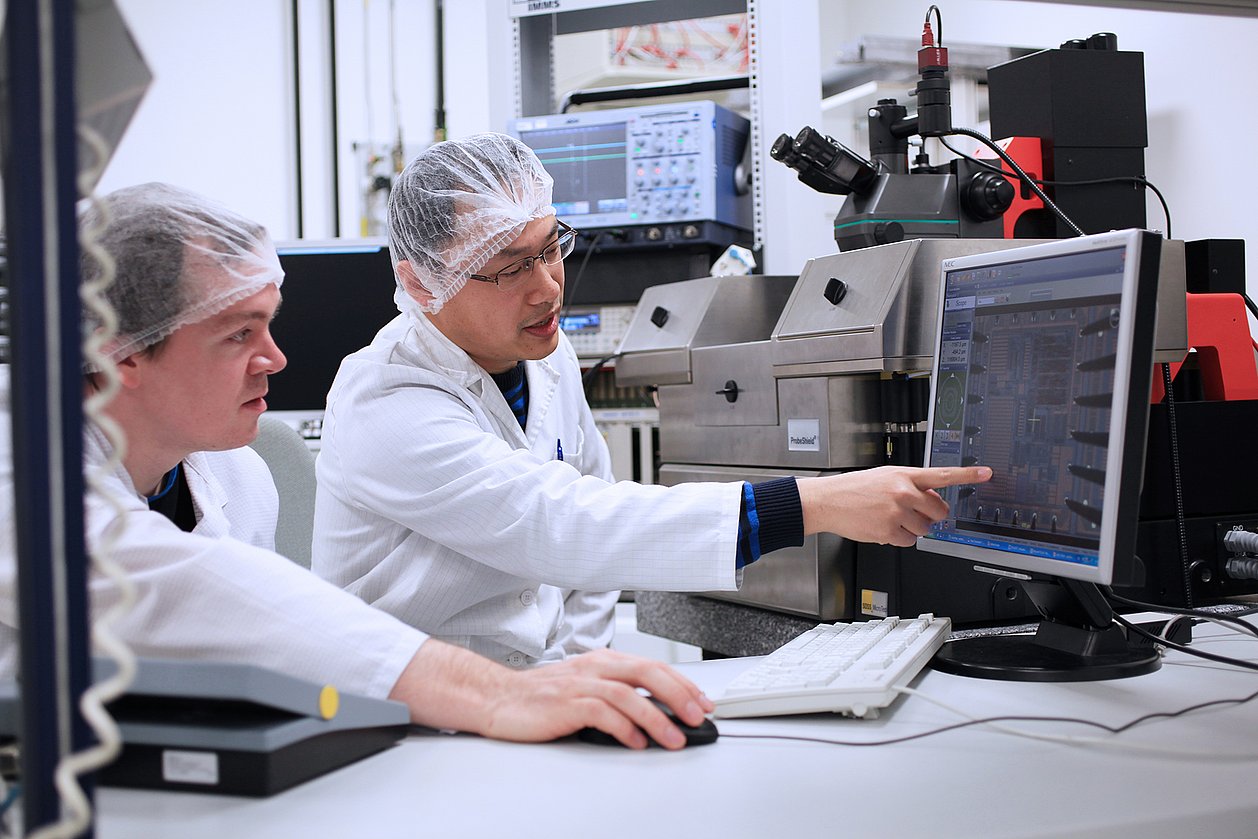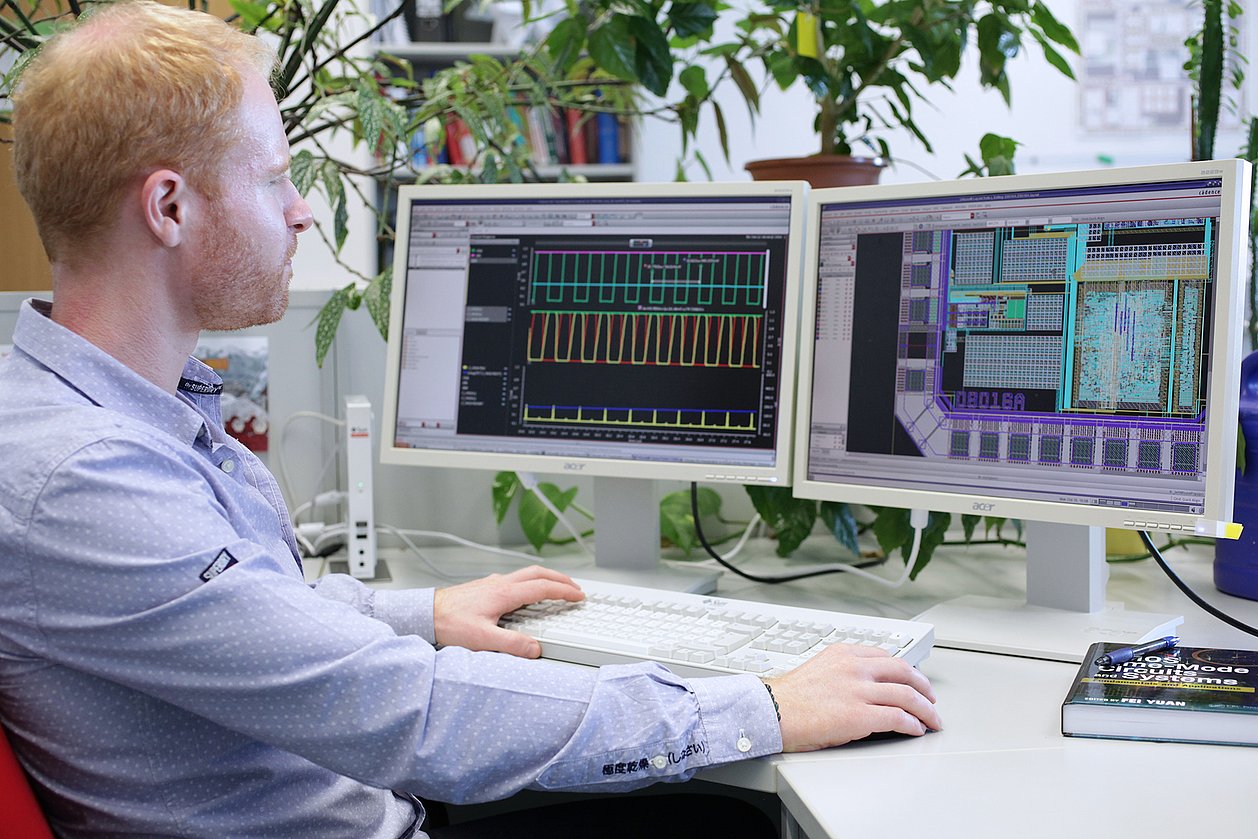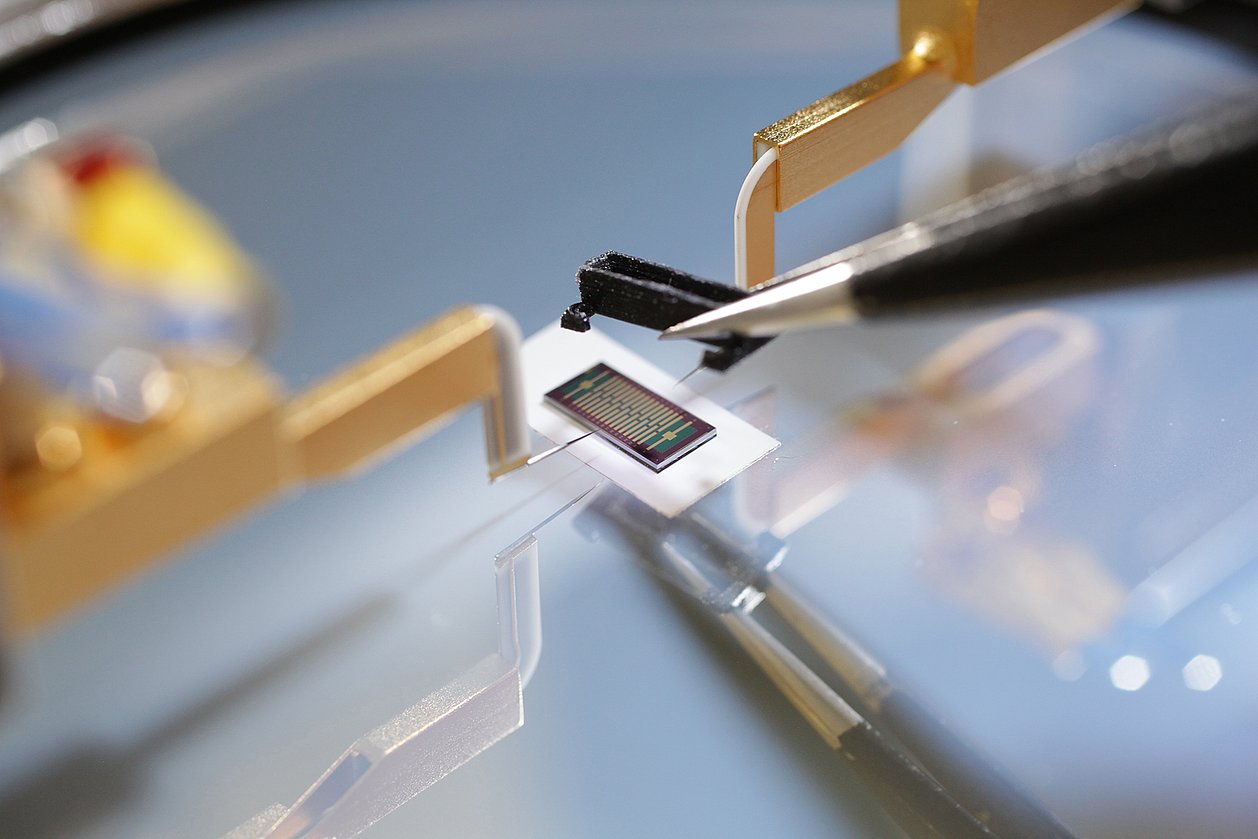Project ScoreChip
IMMS is developing a SPAD-based line sensor for chemiluminescence detection to create a flexible microfluidic scanner platform for the cost-effective detection of biochemical reactions
Challenges for chemiluminescence-based point-of-care devices
To enable the earliest possible treatment to be initiated for sepsis or other clinical pictures, a fast and precise diagnosis is to be established on site without laboratory waiting times. Relevant analytes such as cytokines can be determined using chemiluminescence, for example. These detection reactions produce short, weak flashes of light or a long, weak glow, which is generally not visible to the human eye. In laboratories, the smallest quantities of analytes can be determined via chemiluminescence immunoassays (CLIA) using photomultiplier tubes (PMTs). PMTs are state of the art for low-light sensing, especially for laboratory analysers and central laboratories. PMTs are highly sensitive, but only offer pixel-by-pixel spatial resolution using a two-axis scanning method. Compared to integrated CMOS sensors, they are large and expensive, difficult to miniaturise and integrate with complex electronics or microfluidics. As a result, chemiluminescence-based point-of-care tests tend to be the exception in cost-sensitive applications, although they can achieve high sensitivity and test quality.
Novel modular microfluidic scanner platform for chemiluminescence
In the ScoreChip project, a novel microfluidic scanner platform is being developed for on-site diagnostics of analytes using chemiluminescence. The aim is to visualise biochemical reactions directly from clinical samples, offering an previously unachievable combination of spatial resolution and sensitivity. The new solution revolutionises the PMT approach by scanning fluidic chips with spatial resolution on only one axis instead of two, while offering comparable sensitivity - but at a significantly lower cost.
SPAD technology for faster and more precise diagnoses
The core of the system is a CMOS sensor based on single-photon avalanche diodes (SPADs). SPADs can resolve individual photons and recognise the extremely weak light signals of chemiluminescence, which are generated by biochemical reactions. If required, the platform can be supplemented by an external fluidic control system from the project partners, which makes the measuring system flexible and universally applicable. The development not only enables high-resolution analysis of samples, but also simple adaptation to different diagnostic applications such as sepsis screening.
IMMS opens up SPAD technology for chemiluminescence-based point-of-care diagnostics
IMMS is contributing its extensive experience in the design and manufacture of optoelectronic CMOS sensors to the project. The development of a customised SPAD line sensor achieves a combination of sensitivity and spatial resolution that has never been achieved before. The work includes the design, verification and testing of the sensors as well as the integration into the scanner platform.
Flexibility and cost-effectiveness as key features
Together with the partners' solutions, the microfluidic scanner platform not only offers a more cost-effective alternative to existing systems, but also significantly greater flexibility. Clinics and laboratories can customise the system and thus open up new diagnostic possibilities. This makes the solution particularly interesting for point-of-care applications where speed and precision are crucial.
Acronym / Name:
ScoreChip / Modular platform for point-of-care diagnostics using the example of parameters for sepsis diagnostics, Sub-project: Development of a microfluidic scanner for PoC applications based on SPAD sensorsDuration:2024 – 2027
Application:
|Point-of-care diagnostics| PoC devicesResearch field:Integrated sensor systems
Contact
Contact
Eric Schäfer, M. Sc.
Head of Microelectronics / Branch Office Erfurt
eric.schaefer(at)imms.de+49 (0) 361 663 25 35
Eric Schäfer and his team research Integrated sensor systems, especially CMOS-based biosensors, ULP sensor systems and AI-based design and test automation. The results are being incorporated into research on the lead applications Sensor systems for in-vitro diagnostics and RFID sensor technology. It will assist you with services for the development of Integrated circuits and with IC design methods.
Funding
The joint project ‘Modular platform for point-of-care diagnostics using the example of sepsis diagnostics parameters’ is supported by the funding programme of the German Land of Thüringen for the promotion of research, technology and innovation (RTI) as the research and development initiative Thüringen Verbund Dynamik and co-financed by the European Union under the joint project number 1001607, the sub-project ‘Development of a microfluidic scanner for PoC applications based on SPAD sensors’ under the reference 2024 VFE 0059.


